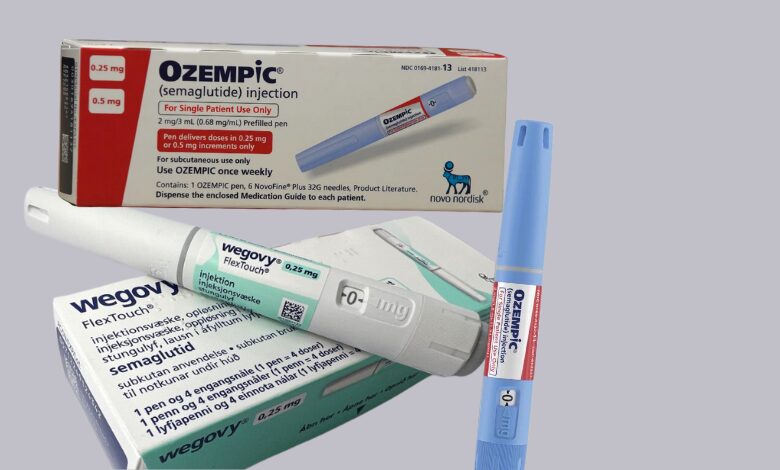Ozempic® and Wegovy® have become game-changers in the fields of type 2 diabetes management and weight loss treatment. Both medications, developed by Novo Nordisk, utilize semaglutide, a compound that mimics a natural hormone to regulate blood sugar levels and appetite. Their effectiveness has led to widespread use and acclaim from both patients and healthcare providers.
However, as these medications gain popularity, their financial implications become increasingly important to understand. The high costs associated with Ozempic® and Wegovy® can be a significant burden for many individuals, especially those without adequate insurance coverage. Beyond personal expenses, these drugs also have broader economic impacts, affecting healthcare systems, insurance premiums, and overall public health spending.

Cost of Medications
The price of Ozempic® and Wegovy® is a significant concern for many patients. These medications can be quite expensive, often costing several hundred dollars per month without insurance. This high price tag can be a considerable burden, especially for those who need long-term treatment.
Current Pricing for Ozempic® and Wegovy®
Ozempic® and Wegovy® are premium medications with prices that reflect their advanced formulations. On average, Ozempic® costs around $800 to $900 per month without insurance. Wegovy® can be even more expensive, often exceeding $1,300 per month. These costs can vary based on factors like dosage, location, and pharmacy.
Factors Contributing to High Costs of Ozempic® and Wegovy®
Several factors contribute to the high costs of Ozempic® and Wegovy®:
- Advanced Research and Development: Significant investment in research and development to create these effective medications.
- Complex Manufacturing Processes: High costs associated with the sophisticated manufacturing techniques required.
- Marketing and Distribution: Expenses related to marketing, distribution, and sales efforts.
- High Demand: Increased demand for these medications drives prices up.
- Regulatory and Compliance Costs: Expenses related to ensuring the drugs meet all regulatory standards and compliance requirements.
These elements collectively contribute to the overall expense, making it essential for patients and healthcare providers to consider financial planning and insurance coverage.
Insurance Coverage
Insurance coverage plays a crucial role in determining the affordability of Ozempic® and Wegovy®. While these medications can be costly, insurance can significantly reduce out-of-pocket expenses for patients, making these treatments more accessible.
Insurance coverage for Ozempic® and Wegovy® varies widely. Many private health insurance plans offer some level of coverage for these medications. Medicare and Medicaid may also provide coverage, but it depends on the specific plan and state regulations. Patients should check with their insurance providers to understand the extent of their coverage.
Having insurance can dramatically lower the cost of these medications. With insurance, patients may only need to pay a copayment or coinsurance, which can be a fraction of the full price. This makes long-term use of Ozempic® and Wegovy® more financially manageable for many individuals.
Variability in Coverage Between Different Plans
The extent of coverage for Ozempic® and Wegovy® can differ significantly between insurance plans. Some plans may cover the full cost, while others might only cover a portion, leaving patients to pay the remainder. Factors such as the type of insurance, specific plan details, and geographic location can all influence the level of coverage.
- Full Coverage Plans: Some insurance plans may cover the entire cost of the medication, minimizing out-of-pocket expenses.
- Partial Coverage Plans: These plans cover a portion of the cost, requiring patients to pay the remaining amount.
- No Coverage Plans: Certain insurance plans might not cover these medications at all, resulting in higher out-of-pocket costs for patients.
Understanding the specifics of one’s insurance coverage is essential for managing the financial impact of these medications effectively.
Out-of-Pocket Expenses
For individuals without insurance, the financial burden of purchasing Ozempic® and Wegovy® can be substantial. These medications are expensive, and paying for them entirely out-of-pocket can strain personal finances.
Without insurance, patients must bear the full cost of Ozempic® and Wegovy®, which can exceed $1,000 per month. This high expense can be prohibitive, leading some individuals to forgo or delay treatment, potentially compromising their health.
Average Out-of-Pocket Costs for Patients
The out-of-pocket costs for Ozempic® and Wegovy® can vary. On average, patients might pay between $800 to $1,300 per month for these medications without insurance. These costs can differ based on dosage, pharmacy pricing, and geographic location. Even with partial insurance coverage, out-of-pocket expenses can still be significant, impacting patients’ budgets.
Ozempic® and Wegovy® Support Programs and Alternatives
To alleviate the financial burden, several support programs and alternatives are available:
- Manufacturer Assistance Programs: Companies like Novo Nordisk offer programs to help eligible patients afford their medications.
- Non-Profit Assistance: Organizations may provide financial assistance or subsidies for those in need.
- Alternative Solutions: Programs like G-Plans offer personalized health and nutrition plans that can complement medication use, potentially reducing overall healthcare costs by improving health outcomes through diet and lifestyle changes.
These options can provide much-needed relief for patients struggling with the high costs of Ozempic® and Wegovy®.
Explore G-PlansEconomic Impact on Healthcare System
The widespread use of Ozempic® and Wegovy® has significant economic implications for the healthcare system. These impacts extend beyond individual patients to affect healthcare providers, insurance companies, and overall public health spending.
Increased Costs for Healthcare Providers
Healthcare providers face increased costs due to the high price of these medications. Hospitals and clinics that include Ozempic® and Wegovy® in their treatment protocols must allocate substantial budgets to procure these drugs. This financial strain can lead to higher operational costs and may necessitate adjustments in other areas of patient care. Providers might have to:
- Reduce spending in other medical areas
- Reallocate resources to prioritize these medications
- Seek additional funding or budget adjustments
Influence on Insurance Premiums and Broader Economic Implications
Insurance premiums are also influenced by the rising demand for these medications. As insurance companies experience higher claims related to Ozempic® and Wegovy®, they may increase premiums for policyholders. This can affect not only those using the medications but also the broader insured population, leading to overall higher healthcare costs for everyone.
The financial burden of Ozempic® and Wegovy® extends to the broader healthcare system. Increased medication costs can result in:
- Higher insurance premiums
- Greater out-of-pocket expenses for patients
- Increased public health spending
These factors can strain the healthcare budget and potentially impact the availability of other healthcare services. Additionally, if more people can effectively manage their diabetes and weight with these medications, there may be long-term economic benefits through reduced complications and hospitalizations, which could offset some of the initial costs.
Understanding these economic impacts is crucial for healthcare providers, insurers, and policymakers as they navigate the financial challenges and benefits associated with Ozempic® and Wegovy®.
Ozempic® and Wegovy® Market Demand and Supply
The demand for Ozempic® and Wegovy® has surged as more people seek effective treatments for diabetes and weight loss. This rising demand is driven by the proven effectiveness of these medications in managing blood sugar levels and aiding in significant weight reduction.
Rising Demand for Ozempic® and Wegovy®
The popularity of Ozempic® and Wegovy® has led to a significant increase in demand. Many patients and healthcare providers prefer these medications due to their effectiveness. As awareness grows, more people are turning to these drugs as viable options for managing diabetes and obesity.
Supply Chain Challenges and Pricing Effects of Ozempic® and Wegovy®
With the surge in demand, supply chain challenges have become more pronounced. These challenges include manufacturing bottlenecks, logistical issues, and limited production capacities. As a result, the availability of these medications can be inconsistent, leading to:
- Higher prices due to supply shortages
- Delays in obtaining medication for patients
- Increased pressure on pharmacies and healthcare providers
Manufacturer Efforts to Meet Demand
Manufacturers are actively working to address these supply chain challenges and meet the rising demand. Efforts include:
- Expanding production facilities to increase output
- Streamlining supply chains to improve distribution efficiency
- Investing in advanced manufacturing technologies
These efforts aim to ensure a steady supply of Ozempic® and Wegovy®, making them more accessible to patients in need. By addressing these challenges, manufacturers hope to stabilize prices and improve the overall availability of these important medications.
Long-term Economic Benefits
The use of Ozempic® and Wegovy® extends beyond immediate health improvements, offering substantial long-term economic benefits. Effective management of diabetes and weight loss through these medications can lead to significant savings and positive economic impacts for both individuals and the healthcare system.
Benefits include:
- Lower long-term treatment costs
- Reduced burden on healthcare facilities
- Fewer costly surgical procedures and interventions
- Increased workforce productivity
- Fewer sick days and absenteeism
- Enhanced quality of life and well-being
- Greater contribution to the economy through sustained employment
Conclusion
Understanding the financial impact of Ozempic® and Wegovy® is crucial for both individuals and the healthcare system. These medications, while highly effective, come with significant costs that can burden patients and affect insurance premiums. Balancing these expenses with the substantial health benefits they offer is essential. Effective use of Ozempic® and Wegovy® can lead to improved health outcomes, reduced healthcare costs, and broader economic benefits. Managing the financial implications involves careful planning, exploring insurance options, and considering support programs to make these groundbreaking treatments more accessible and affordable for those who need them.
ChesWorkShop commits to presenting fair and reliable information on subjects including cryptocurrency, finance, trading, and stocks. However, we do not have the capacity to offer financial guidance, advocating instead for users to conduct their own diligent research.
